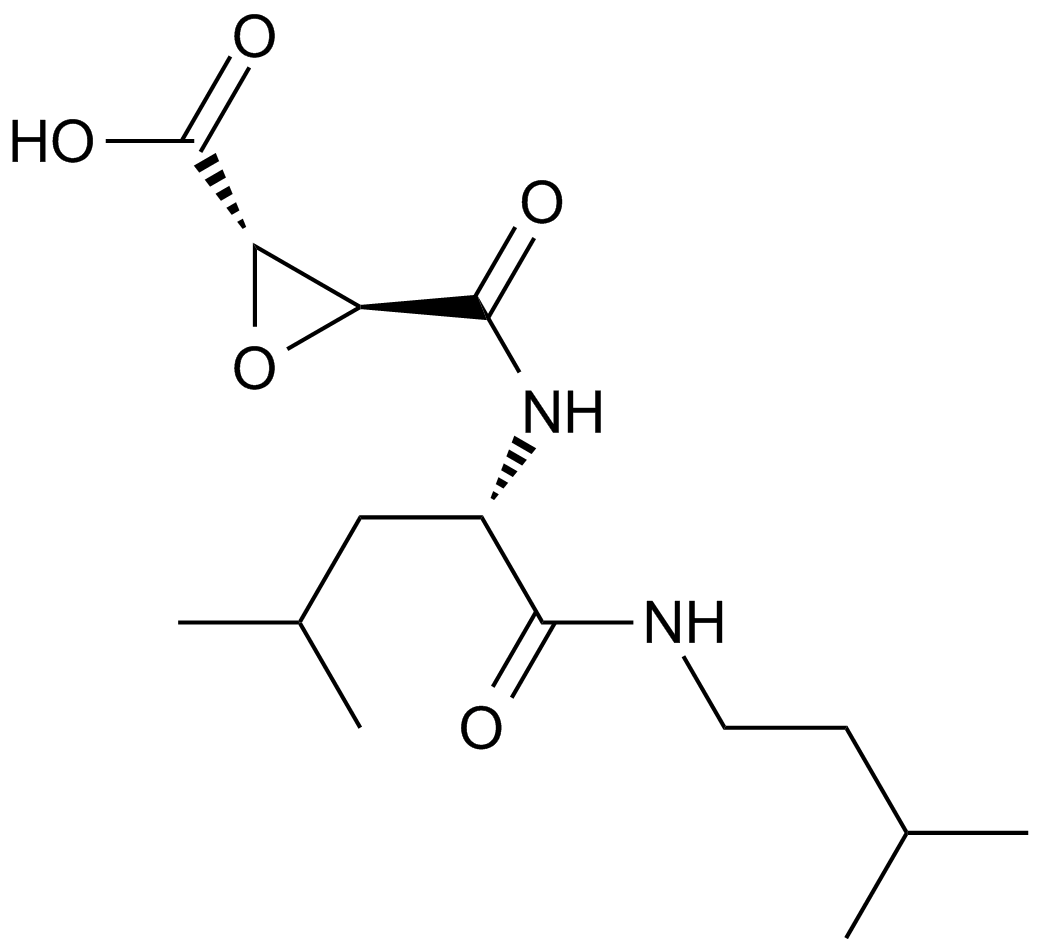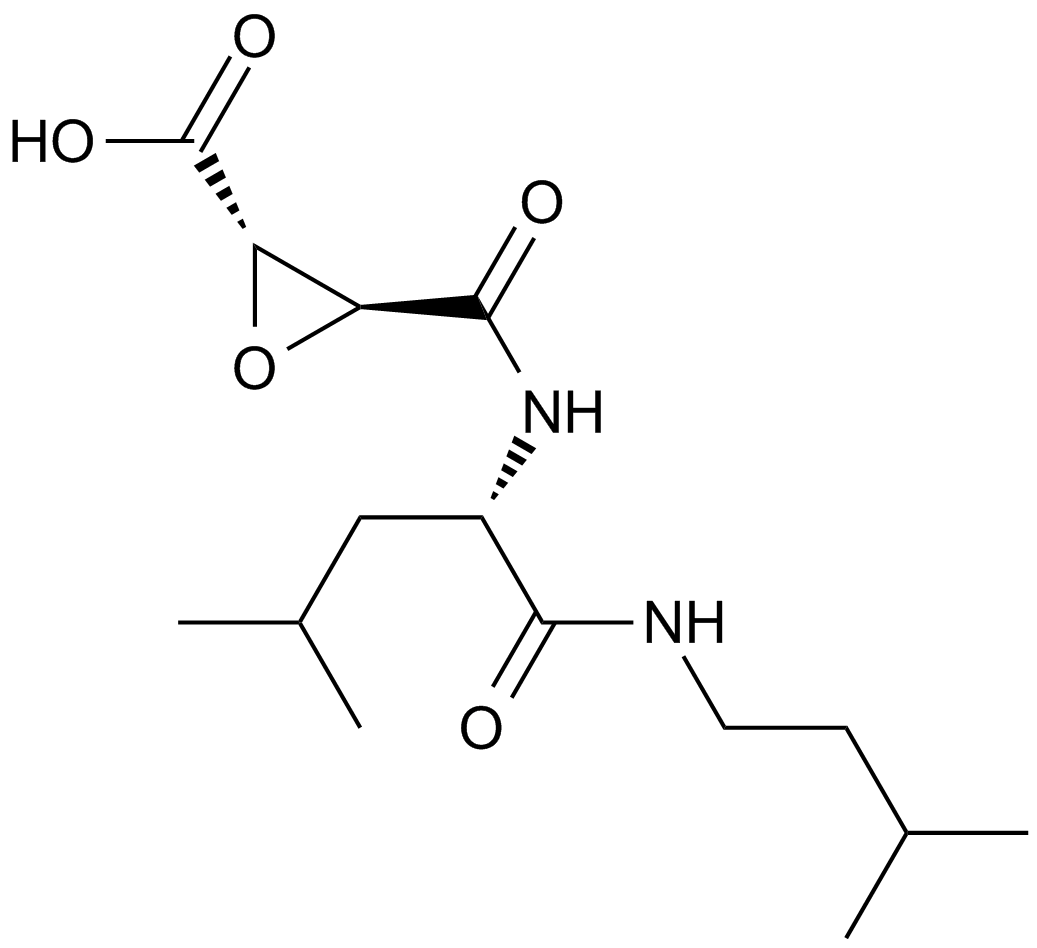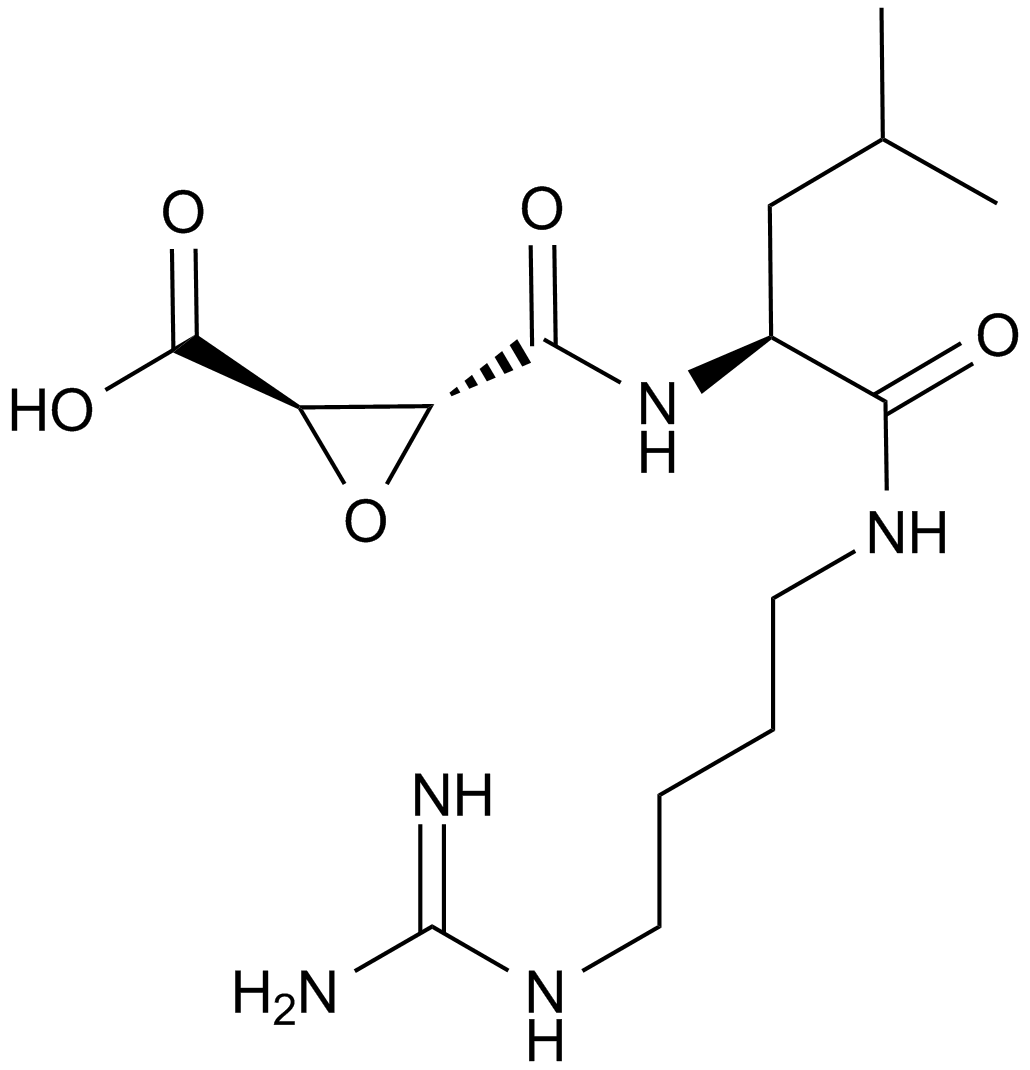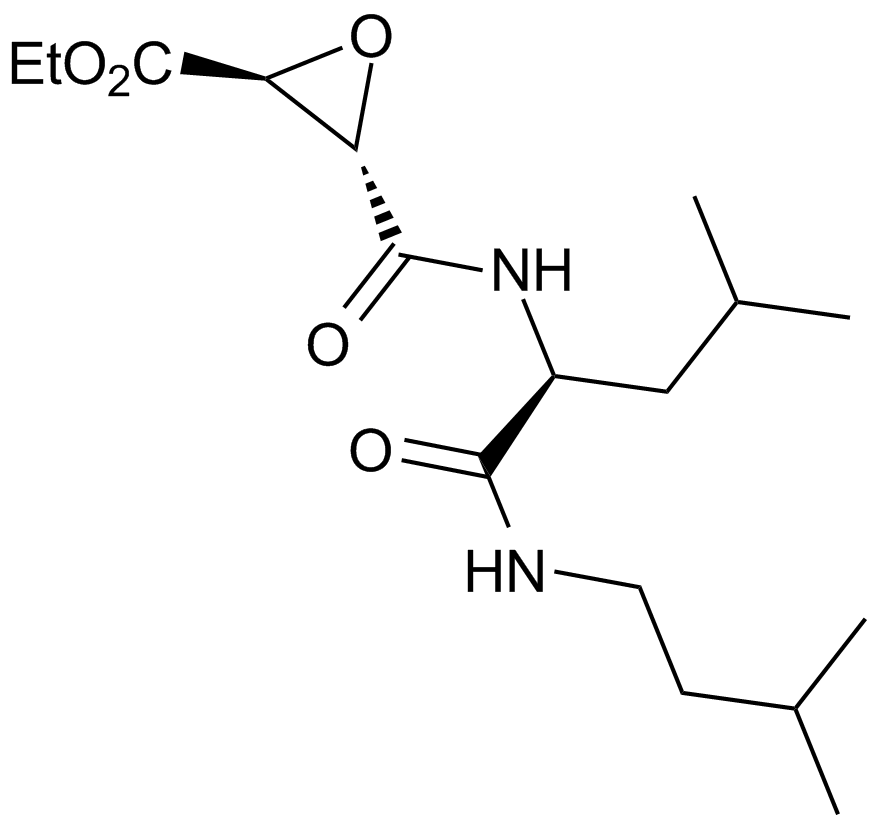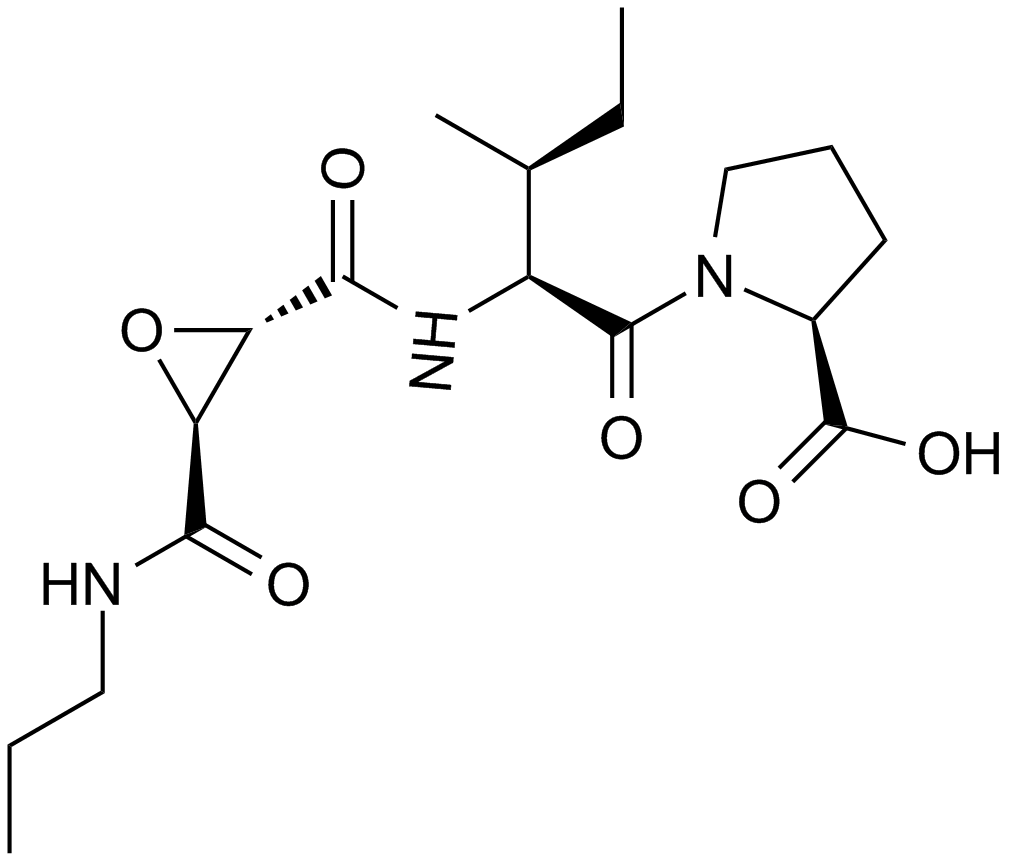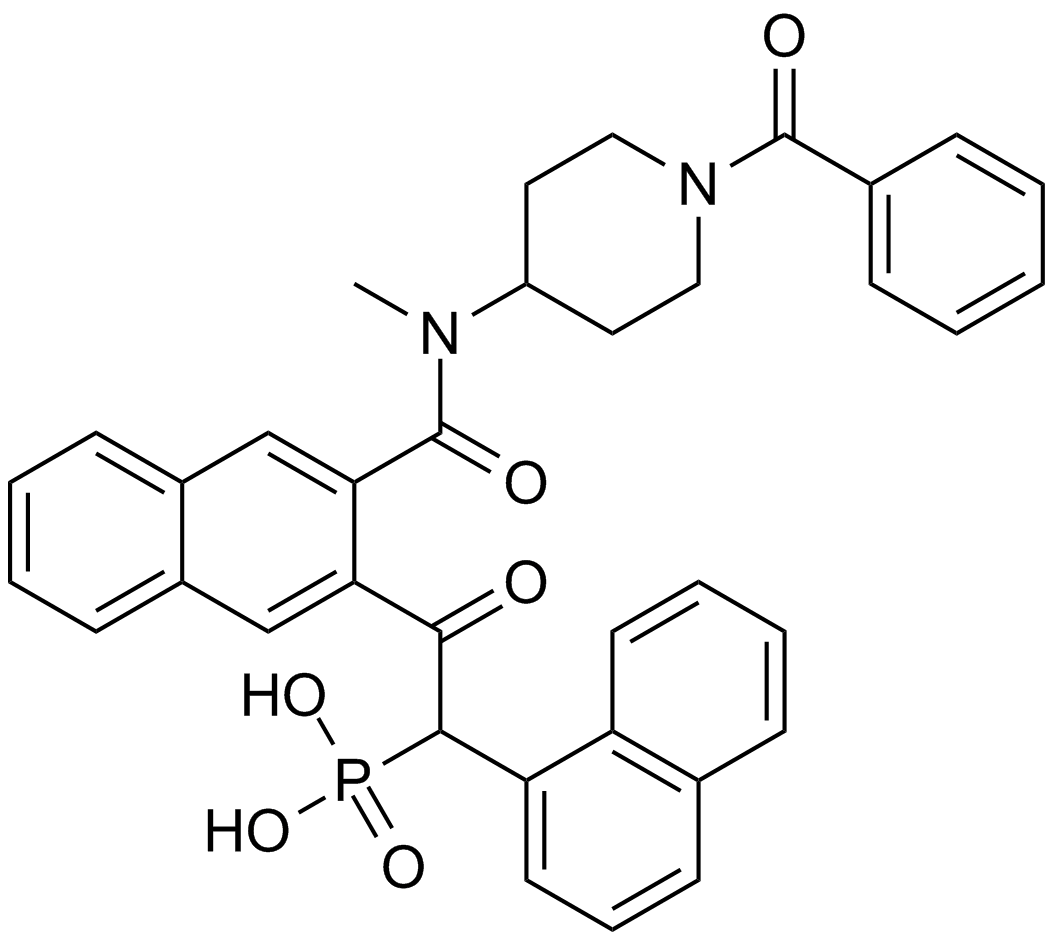E-64-c
E-64-c (CAS: 76684-89-4), also referred to as Ep-475, is an analog of E-64 and functions as a cysteine protease inhibitor. It inhibits mammalian cysteine proteases, notably cathepsins B, H, and L, by covalently binding to their active site sulfhydryl groups. Compared to E-64, E-64-c exhibits significantly higher inhibitory potency for cathepsins B and L, with inactivation rate constants of 2.98×10^5 M^-1s^-1 and 2.06×10^5 M^-1s^-1, respectively. Research applications demonstrated that E-64-c reduces cysteine protease-mediated protein degradation, including reducing muscle proteolysis in burned rats and ischemic cerebral protein breakdown in rodent stroke models.
| Physical Appearance | A solid |
| Storage | Store at -20°C |
| M.Wt | 314.4 |
| Cas No. | 76684-89-4 |
| Formula | C15H26N2O5 |
| Solubility | ≥31.4 mg/mL in DMSO; insoluble in H2O; ≥111.8 mg/mL in EtOH |
| Chemical Name | (2S,3S)-3-[[(2S)-4-methyl-1-(3-methylbutylamino)-1-oxopentan-2-yl]carbamoyl]oxirane-2-carboxylic acid |
| SDF | Download SDF |
| Canonical SMILES | CC(C)CCNC([C@H](CC(C)C)NC([C@H]1O[C@@H]1C(O)=O)=O)=O |
| Shipping Condition | Small Molecules with Blue Ice, Modified Nucleotides with Dry Ice. |
| General tips | We do not recommend long-term storage for the solution, please use it up soon. |
| Cell experiment [1]: | |
|
Cell lines |
Neuronal chromaffin cells |
|
Preparation method |
The solubility of this compound in DMSO is > 10 mM. General tips for obtaining a higher concentration: Please warm the tube at 37 °C for 10 minutes and/or shake it in the ultrasonic bath for a while. Stock solution can be stored below - 20 °C for several months. |
|
Reacting condition |
10 μM |
|
Applications |
In neuronal chromaffin cells, E-64-c inhibited the production of the 12 ~ 14 kDa β-secretase product from APP. In addition, when tested in isolated, intact secretory vesicles, E-64-c reduced the production of Aβ (1 ~ 40). These results indicated an important role of E-64-c in β-secretase processing of APP in neuronal chromaffin cells. |
| Animal experiment [2]: | |
|
Animal models |
Rat models of cerebral ischemia |
|
Dosage form |
400 mg/kg; i.p.; b.i.d, for 3 days |
|
Applications |
In rat models of cerebral ischemia, E-64-c significantly inhibited the ischemia-induced depletion of microtubule-associated protein 2 (MAP2). E-64-c increased MAP2 levels to 55 ± 25.7% of control levels (sham-operated rats used as controls). However, E-64-c showed no marked effect on the decrease of myelin-associated glycoprotein caused by ischemia. |
|
Other notes |
Please test the solubility of all compounds indoor, and the actual solubility may slightly differ with the theoretical value. This is caused by an experimental system error and it is normal. |
|
References: [1]. Hook VY, Reisine TD. Cysteine proteases are the major beta-secretase in the regulated secretory pathway that provides most of the beta-amyloid in Alzheimer's disease: role of BACE 1 in the constitutive secretory pathway. J Neurosci Res. 2003 Nov 1;74(3):393-405. [2]. Inuzuka T, Tamura A, Sato S, et al. Suppressive effect of E-64c on ischemic degradation of cerebral proteins following occlusion of the middle cerebral artery in rats[J]. Brain research, 1990, 526(1): 177-179. | |
| E-64-c is an effective synthetic calpain inhibitor composed from E-64, which also inhibits cathepsin B, cathepsin H, and cathepsin L (cysteine proteases). | ||||||
| Targets | cathepsins B | cathepsins H | cathepsins L | |||
| IC50 | ||||||
Quality Control & MSDS
- View current batch:
Chemical structure
